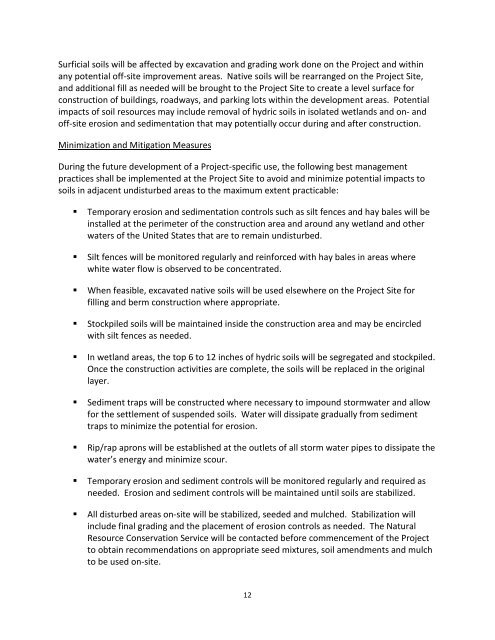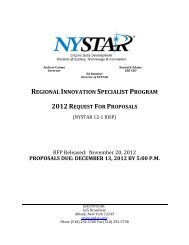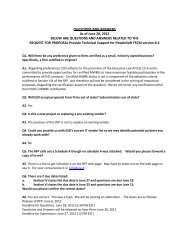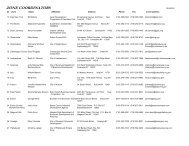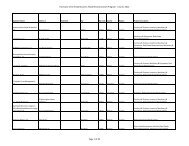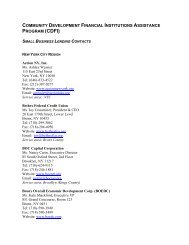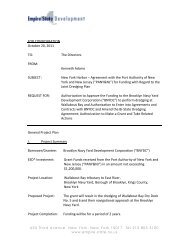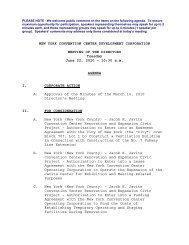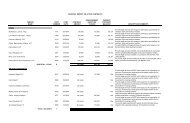NEW YORK STATE URBAN DEVELOPMENT CORPORATION d/b/a ...
NEW YORK STATE URBAN DEVELOPMENT CORPORATION d/b/a ...
NEW YORK STATE URBAN DEVELOPMENT CORPORATION d/b/a ...
You also want an ePaper? Increase the reach of your titles
YUMPU automatically turns print PDFs into web optimized ePapers that Google loves.
Surficial soils will be affected by excavation and grading work done on the Project and within<br />
any potential off-site improvement areas. Native soils will be rearranged on the Project Site,<br />
and additional fill as needed will be brought to the Project Site to create a level surface for<br />
construction of buildings, roadways, and parking lots within the development areas. Potential<br />
impacts of soil resources may include removal of hydric soils in isolated wetlands and on- and<br />
off-site erosion and sedimentation that may potentially occur during and after construction.<br />
Minimization and Mitigation Measures<br />
During the future development of a Project-specific use, the following best management<br />
practices shall be implemented at the Project Site to avoid and minimize potential impacts to<br />
soils in adjacent undisturbed areas to the maximum extent practicable:<br />
Temporary erosion and sedimentation controls such as silt fences and hay bales will be<br />
installed at the perimeter of the construction area and around any wetland and other<br />
waters of the United States that are to remain undisturbed.<br />
Silt fences will be monitored regularly and reinforced with hay bales in areas where<br />
white water flow is observed to be concentrated.<br />
When feasible, excavated native soils will be used elsewhere on the Project Site for<br />
filling and berm construction where appropriate.<br />
Stockpiled soils will be maintained inside the construction area and may be encircled<br />
with silt fences as needed.<br />
In wetland areas, the top 6 to 12 inches of hydric soils will be segregated and stockpiled.<br />
Once the construction activities are complete, the soils will be replaced in the original<br />
layer.<br />
Sediment traps will be constructed where necessary to impound stormwater and allow<br />
for the settlement of suspended soils. Water will dissipate gradually from sediment<br />
traps to minimize the potential for erosion.<br />
Rip/rap aprons will be established at the outlets of all storm water pipes to dissipate the<br />
water’s energy and minimize scour.<br />
Temporary erosion and sediment controls will be monitored regularly and required as<br />
needed. Erosion and sediment controls will be maintained until soils are stabilized.<br />
All disturbed areas on-site will be stabilized, seeded and mulched. Stabilization will<br />
include final grading and the placement of erosion controls as needed. The Natural<br />
Resource Conservation Service will be contacted before commencement of the Project<br />
to obtain recommendations on appropriate seed mixtures, soil amendments and mulch<br />
to be used on-site.<br />
12


